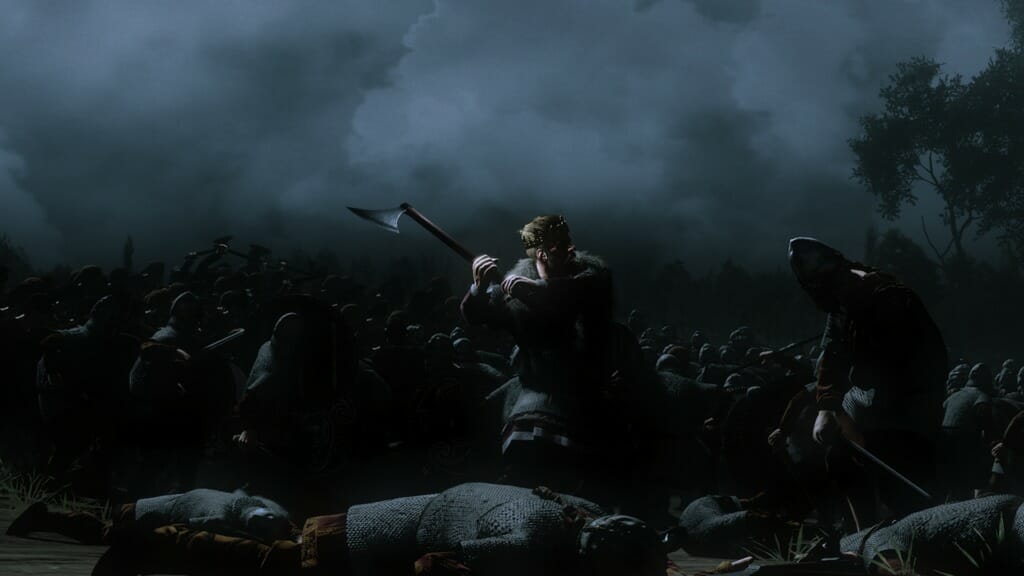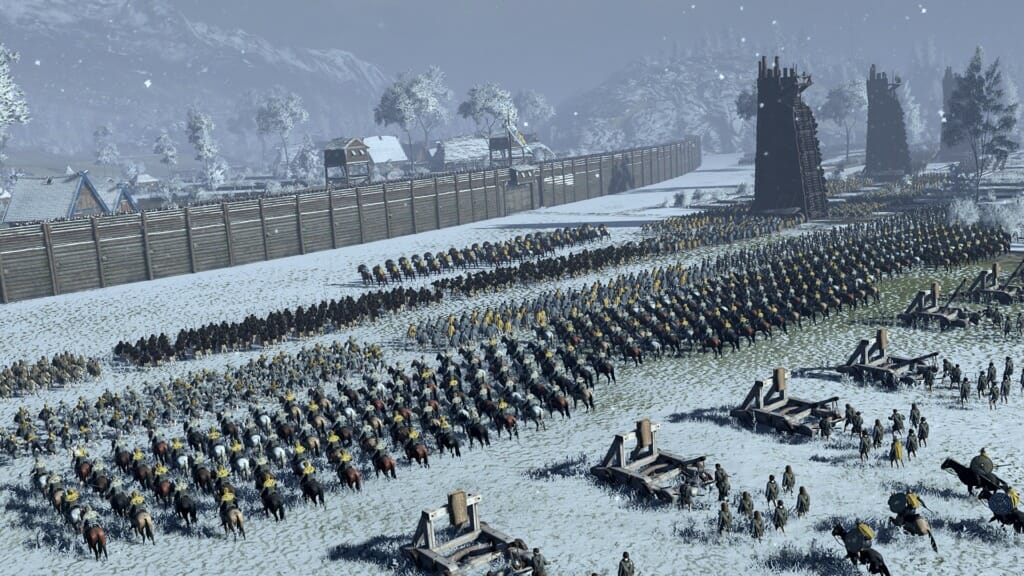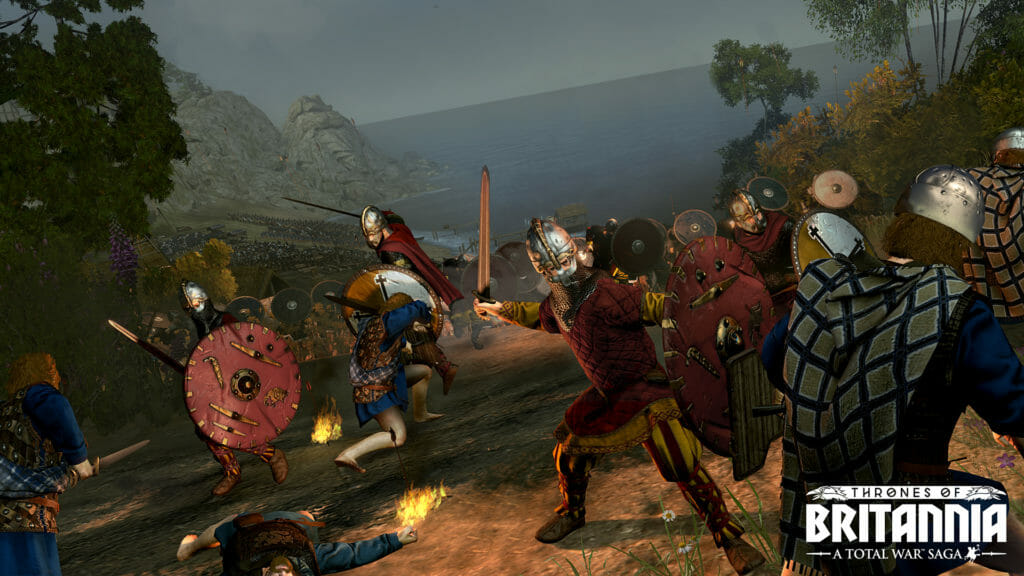Thrones of Britannia – Viking Sea Kings
Viking Sea Kings
After nearly a century of escalating raids, the Vikings left an indelible stamp on Britannia, altering the course of its history forever. Not least of all culturally, as many smaller bands of Vikings had settled around the isles prior to Alfred’s defeat of the Great Viking army.
These smaller factions traded an existence of ceaseless conflict for a new life in Britannia, establishing their own petty principalities, intermarrying and ultimately becoming part of the warp-and-woof of Britannic life. This mingling of cultures, so emblematic of British history, helped create the rich melting-pot of attitudes, beliefs and language that has made the isles and their people so unique.
Some Vikings never truly settled however; their designs were grander, their hunger for conquest and greatness unquenched. These Sea Kings would continue their bellicose work, heedless of any decree from England’s upstart ruler…
Viking Sea Kings: Cultural Traits
These warriors are born with oar in hand, ever afloat on a sea of opportunities. Missions will be issued tempting you to explore the points of the compass. Who knows what adventures – and plunder – await?
Why toil for yourself when others can do it for you? The Viking Sea Kings are adept at extracting tribute from other kingdoms, gaining unique bonuses.
The Viking Sea Kings are as at home on the high seas as others are on land. All their forces are immune to High Seas Attrition and Seasickness.
Viking Sea King Faction: Dyflin
Dyflin was a major port town on the east coast of Ireland, and the site of Britannia’s largest slave market. It was a major site of Viking occupation, and was ruled until 873 by the Viking lord Imar, often associated with Ivar the Boneless, a son of the legendary Viking warlord Ragnar Lothbrok. Viking raiders had wintered there as early as 840 AD, so their association with the region had been a long one, and over time their customs began to take on a more Gaelic flavour as the slow process of integration took its course.
By 878 AD however, Imar’s son Bardr was firmly established on the throne. Would this ambitious Viking ruler seek to seal a lasting peace with the surrounding Gaelic factions? Or return to the ways of Ragnar, and pursue a path of bloodshed and domination? It is hard to ignore the calling of one’s warrior-blood…
Dyflin faction leader: Bardr
Bardr assumed the throne after the passing of his father in 873 AD, and ruled with a fierce sense of pride. He flexed his military muscles a number of times, raiding the Gael-inhabited islands of Lough Ree on the River Shannon, amongst other targets. Following the death of his father Imar, he ruled Dyflin with the close counsel of his cousin Oistin.
In 875 AD, Oistin was slain by Halfdan Ragnarsson – the self-same son of Ragnar who had divided the Great Viking Army several years prior on his quest for personal glory. This was part of Halfdan’s ham-fisted attempt to secure the kingdom of Dyflin for himself, and his effort to take the city by force, two years later, would be his undoing.
Dyflin Faction Traits:
Dyflin maintains the largest slave-trading port in Britannia. They will take on slaves after winning battles, raiding, sacking and occupying enemy settlements, for sale in their markets.
Having developed a thriving port-town of their own, the builders of Dyflin are experienced craftsmen and logisticians. All construction costs for Dyflin are substantially reduced.
Viking to the core, Dyflin is able to field very strong axe infantry and Berserkers in its armies. These are supported with a good, general diversity of units and strong javelinmen.
Viking Sea King faction: Sudreyar
To the west of Alba lies Sudreyar, the Kingdom of the Southern Isles. Comprising the southern Hebrides, these scattered islands were sparsely populated and, bearing the full brunt of the Atlantic weather, were not lands suited to the less-hardy.
Like much of Britannia, these islands saw increasing Viking contact from the 8th Century. Prior to this period they formed part of the Gaelic kingdom of Dalriada, until they fell under Viking control. Over the next century, Scandinavian occupancy took on a distinctly Gaelic flavour (and vice-versa), particularly after 872 AD when Harald Fairhair became king of Norway, and his former opponents flocked to the area.
Materially poor, but offering an excellent base for those of a nautical bent, the isles of Sudreyar are a perfect staging-post for raiders and explorers.
Sudreyar Faction Leader: Eirik*
Little is known of Eirik Fálki – or Erik the Hawk – save that he was of common stock and rose to a position of power through a ruthless practicality. He embodied many of the qualities that history would associate with the Vikings as a whole: he was a great seafarer, instilled in his men a sense of adventure, and led by example. Under his rule, Sudreyar would become more than a mere collection of islands.
Sudreyar Faction Traits:
Missions will be issued to Sudreyar by the Field of Assembly, a convocation of free men and lawmakers, who meet to decide the matters of the day.
The harsh climate of the Hebrides teaches harsh lessons in survival. As a result, the armies of Sudreyar are adept scavengers, and gather bonus Supplies when operating in enemy territory.
Sudreyan forces are Viking in nature, and as such, their armies feature very strong axe and sword infantry. They have access to Berserkers and other Norse units and, in general, boast a good diversity of units.
*No reliable record exists of the Viking leader of Sudreyar in the year 878 AD, when the Thrones of Britannia campaign commences. In the interests of full disclosure, Eirik Fálki is therefore a character we have engineered, along with his backstory and motivations. The rest of his saga has yet to be written – by you!



